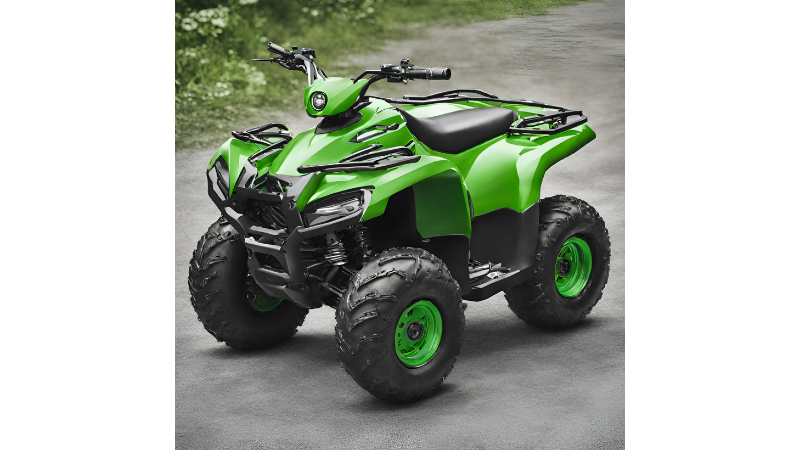Common problems with the Kawasaki KRX 1000 include issues with its belt failure and heat management. Owners often seek solutions for these reliability concerns.
Kawasaki’s KRX 1000 burst onto the extreme side-by-side scene boasting powerful performance and rugged durability. Yet like any vehicle, it faces operational challenges that enthusiasts and everyday riders must navigate. Belt problems often stem from the stress of hard driving, with heat exacerbating wear and tear.
To mitigate these breakdowns, regular inspection and maintenance of the CVT belt become essential. Heat issues can emanate from the engine or exhaust, thus necessitating proper ventilation and possibly the addition of aftermarket cooling systems. Riders who tackle the KRX 1000’s problems with proactive upkeep typically enjoy a more reliable and exhilarating off-road experience. Addressing these common concerns ensures that the KRX 1000 lives up to its full potential in various terrains and usage scenarios.
Common Problems
The Kawasaki Krx 1000 thrills with off-road prowess, but no ride is free from troubles. Understand these common issues and tackle them head-on to keep the adventure going.
Overheating Issues
Kawasaki Krx 1000 may overheat due to various reasons. Spot these early signs for a swift fix:
- High temperature readings
- Steam from engine area
- Sudden engine power loss
Regular maintenance is key. Check coolant levels and radiator condition often to prevent overheating. Keep the ride cool, and the fun won’t stop.
Suspension Problems
Suspension deals with rough trails, but it can falter. Look out for:
- Uneven tire wear
- Poor handling
- Strange noises over bumps
Keep suspension components in check. Regular inspections and timely replacements ensure a smooth ride.
Electrical System Malfunctions
Electrical issues can be elusive but are critical. Key signs include:
- Difficulty starting the vehicle
- Flickering lights
- Error codes on dash
Simple steps prevent big problems. Secure connections and check battery health often. Stay ahead of electrical woes for uninterrupted fun.

Solutions
Exploring the rugged terrain in a Kawasaki Krx 1000 is quite the adventure until common problems creep in. Let’s dig into the solutions to keep these beasts running smoothly. Keep in mind, a properly maintained machine reduces the likelihood of these issues occurring in the first place. By addressing the following common problems promptly and efficiently, riders ensure a smoother and safer experience.
Overheating Solutions
To tackle overheating, start by checking the coolant level; if low, top it up. Next, inspect the radiator for obstructions and clean if necessary. Proper airflow is crucial for cooling, so ensure nothing blocks the front grille. If the issue persists, a mechanic should check the thermostat and water pump.
Suspension Problem Fixes
For suspension woes, begin with a visual inspection. Look for visible damage on shocks and struts. If the ride is unusually bumpy, consider replacing worn-out shocks. Upgrade to high-performance parts for better handling and stability. Regular maintenance extends suspension life.
Electrical System Troubleshooting
Electrical issues can be tricky. Start by examining battery terminals for corrosion- clean them for a better connection. Use a multimeter to check the battery’s charge; replace it if weak. Additionally, check fuses and wiring for damage or loose connections, and replace any faulty parts.
Preventive Maintenance
Preventive maintenance plays a crucial role in handling the Kawasaki KRX 1000 effectively. Here, we expose some typical issues of this model and ways to prevent them.
Routine Maintenance Practices
Regular maintenance helps Kawasaki KRX 1000 run well and last longer. Consider these practices:
- Oil changes: Change engine oil every 50 hours of use or every six months. This practice keeps the engine in healthy condition.
- Air filter checks: Inspect the air filter every ride. Clean or replace yearly or if it’s clogged or damaged.
- Tire pressure: Check the tire pressure before every trip. Correct tire pressure ensures safe driving.
- Brake fluid: Change brake fluid annually. This prevents brake failure.
Proactive Measures For Longevity
Here are some proactive measures to extend the life of your Kawasaki KRX 1000:
- Pre-ride inspection: Check your vehicle before every ride.
- Regular cleaning: Clean after every ride. It prevents build-up of dirt, maintaining the vehicle’s appearance.
- Proper storage: Store your vehicle in a clean, dry place. It helps avoid rusting and damage.
- Scheduled servicing: Service your vehicle as per Kawasaki’s guidelines. It ensures optimal performance.
Frequently Asked Questions
Kawasaki KRX 1000 Top Speed?
The top speed of the Kawasaki KRX 1000, a sport side-by-side (UTV) vehicle, is approximately 70 mph (113 km/h).
What Does Eco Mean On A Krx 1000?
Eco on a KRX 1000 refers to economy mode. This mode optimizes the vehicle’s performance for fuel efficiency, reducing fuel usage and emissions. It’s ideal for regular driving at lower speeds.
How Much Horsepower Does A 2023 Kawasaki Teryx Krx 1000 Have?
The 2023 Kawasaki Teryx KRX 1000 boasts a 112 horsepower engine.
How Many Gallons Does A Krx 1000 Hold?
The Kawasaki Teryx KRX 1000 has a fuel capacity of 10. 6 gallons. This provides substantial range for your off-road adventures.
Conclusion
Navigating through common issues with the Kawasaki Krx 1000 need not be a pain point, armed with the solutions offered in this guide. Remember: with the right knowledge and approach, you can enjoy a problem-free ride. Keep this blog post handy for reference and enjoy many successful journeys with your sturdy and powerful Kawasaki Krx 1000.

